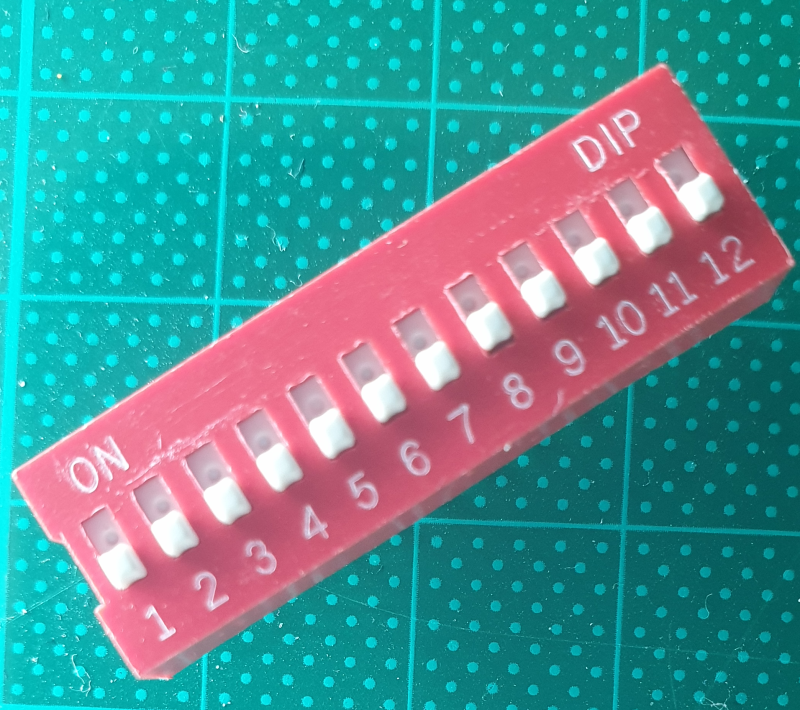Passice components, Switch, Dip Switch

In electronics, the acronym DIP when applied to switch types stands for ‘dual in-line package’. A dual in-line package switch, or DIP switch, is actually set of small manual electronic switches that are designed to be packaged with other circuits. The term DIP switch may refer either to an individual switch on a multi-switch unit, or to the entire unit as a whole.
In a nutshell, the role of DIP switches is to allow users to control the flow of electricity around a printed circuit board (PCB), expansion card or other electronics/computer peripheral, and therefore change the operating mode of a device.
When installed on a PCB alongside other electrical components, DIP switches offer the potential for the user to customise the behavior of the electronic device in question, enabling fuller control over the precise function the device will perform in a range of defined scenarios or applications. DIP switches are typically presented as a row of tiny toggle (on/off) switches, rather like a series of miniature standard light switches, mounted sequentially on a block of heat-resistant thermoplastic polymer.
As a complete component, a set of DIP switches is almost always very small, requiring some dexterity on the user’s part to toggle each switch between on and off positions. In day to day practice, this function is often performed with the point of a sharp pencil or a similar suitably shaped tool, as the individual switches themselves tend to be too small for comfortable finger operation.
A DIP switch is a relatively simple and cost-effective component that’s commonly used as an inexpensive way to select and change between various hardware or device options. They’re usually considerably cheaper than other options such as software control panels or programmable chips, with the compromise being that DIP switches require the user to physically open the device to access the PCB, and operate the switches manually from there.
2 polig, red, #10, Bak 1.09.A
4 polig, red, #10, Bak 1.09.B
8 polig, red, #10, Bak 1.09.B
10 polig, red, #10, Bak 1.09.A